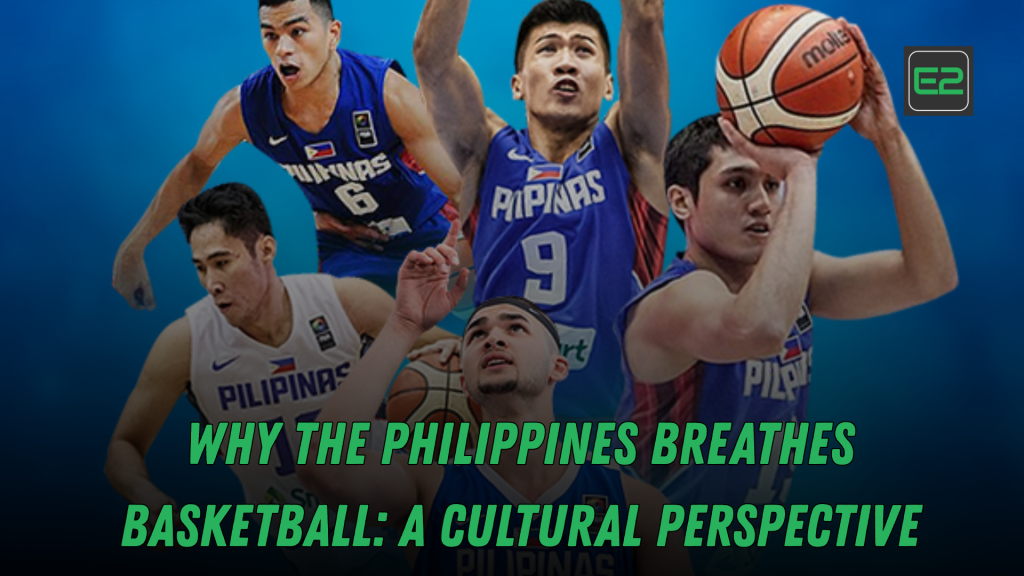Basketball isn’t just a sport in the Philippines — it’s a heartbeat. From densely packed urban streets to rural barangays surrounded by rice paddies, the image of a basketball hoop — sometimes just a ringless rim nailed to a coconut tree — is as common as a sari-sari store. But what makes basketball so deeply embedded in the Filipino soul? Why is it that in every corner of the archipelago, people are playing, watching, or talking about the game?
This article dives deep into the cultural, historical, and emotional connection between the Philippines and basketball — exploring why the country doesn’t just play the game, it breathes it.
Table of Contents
A Historical Bond That Took Root Early
It was introduced to the Philippines in 1910 by American colonizers, just a decade after the sport was invented by Dr. James Naismith in the United States. What started as a physical education activity in schools quickly transformed into a national obsession.
By the 1920s, basketball was being played in most public schools, and in 1936, the Philippines represented Asia in the first Olympic basketball tournament, finishing fifth — a standing still unmatched in Asian basketball history. It became one of the first sports Filipinos could dominate on the world stage, instilling a lasting sense of pride.
Accessible to Everyone, Everywhere
Basketball’s rise in the Philippines can largely be attributed to its accessibility:
- Minimal equipment needed — just a ball and a hoop.
- Small playing space — even half courts, narrow alleys, or improvised backyard areas suffice.
- Affordable — no need for expensive gear or memberships.
This low barrier of entry made it the ideal sport in a developing country where space and resources were often limited. Basketball became a sport of the people, not the elite.
A Rite of Passage for Filipino Boys
For many Filipino boys, the first toy isn’t a ball — it’s a miniature basketball hoop hung behind the bedroom door. Street courts double as playgrounds and life classrooms where kids learn teamwork, discipline, and even how to settle disputes.
Whether it’s shooting alone at sunset, playing barefoot in a muddy court, or joining their first 5-on-5 during a barangay league, basketball is often a boy’s first taste of ambition and competition. For some, it becomes a path out of poverty. For all, it’s a shared childhood memory.

Barangay Leagues and Community Pride
Local tournaments, known as “liga”, are held in practically every barangay during fiestas or summer breaks. These games are intense, with players proudly representing their neighborhoods. Crowds pack makeshift bleachers, snacks and drinks are sold on the sidelines, and families cheer like it’s Game 7 of the NBA Finals.
Winning a barangay tournament is a badge of honor, and players — even those not formally trained — gain local stardom. These leagues are community lifeblood, giving rise to grassroots talents and keeping the sport alive in every corner of the country.

PBA and Gilas Pilipinas: Heroes on the Court
The PBA is the oldest professional basketball league in Asia and the second oldest in the world after the NBA. Since 1975, the PBA has given Filipinos hometown heroes like Robert Jaworski, Alvin Patrimonio, James Yap, and June Mar Fajardo.
Then there’s Gilas Pilipinas, the national team. Every international tournament — especially when the team faces regional rivals like China or South Korea — turns into a national event. Wins bring joy, losses bring tears, but the unwavering support of Filipino fans never fades.
Basketball is one of the few things that unites Filipinos regardless of age, social class, or region.

Basketball as Therapy and Escape
In a country frequently facing economic hardship, political drama, and natural disasters, basketball offers a mental escape. It gives people something to look forward to after a hard day. Playing basketball under the sun or lights provides not just exercise, but therapy, friendship, and laughter.
It’s not uncommon to see construction workers playing during lunch breaks, or drivers parking their jeepneys just to watch a game. Basketball is everyman’s medicine, a quick break from the chaos of life.
Barangay Basketball: How Street Courts Shape Filipino Communities
Media and Social Influence
This sport enjoys massive media coverage in the Philippines. From the PBA to the NBA, games are broadcast regularly on free TV, cable, and now online platforms. Social media pages track local and international stars, while YouTube is filled with clips of street ball legends, bloopers, and highlight reels.
Even viral internet personalities have used basketball as a platform for fame. The court has become both a stage and screen for modern Filipino culture.
Even Overseas Filipinos Bring the Game with Them
Filipino overseas workers have brought basketball culture with them to the Middle East, the U.S., Europe, and beyond. Courts are set up in desert camps, cruise ship decks, and embassy grounds. For OFWs, playing basketball offers not only fun and exercise, but a taste of home.
Even Filipino migrants organize inter-country leagues where different Pinoy communities compete. The game helps maintain national identity even when thousands of miles away.
What It All Means
Basketball in the Philippines isn’t simply about scoring points. It represents:
- Hope: The dream of becoming the next superstar.
- Community: A place where everyone belongs.
- Character: A training ground for humility, teamwork, and perseverance.
- Culture: A shared language that connects Filipinos across generations.
Conclusion: More Than a Game, It’s a Way of Life
To understand why the Philippines breathes basketball is to understand the heart of the Filipino people. It’s in every corner court, every spirited crowd, every kid dribbling a worn-out ball. The sport captures what it means to be Filipino — resilient, passionate, competitive, and deeply connected.
Basketball is not just played in the Philippines. It is lived.
And that’s why, more than a century since its introduction, it remains the most beloved sport in the country — not just a game, but a national soul in motion.

